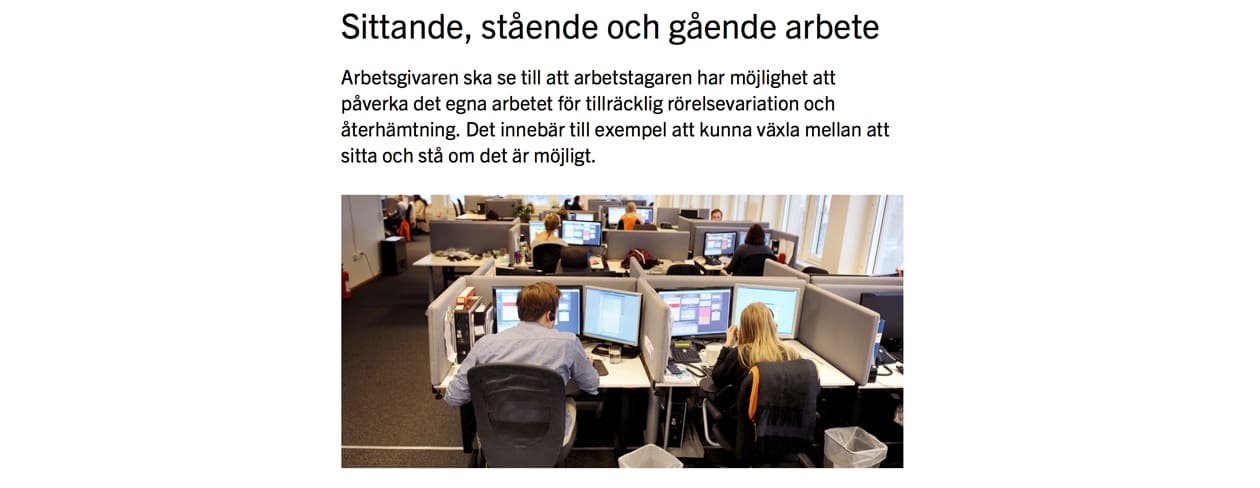Working while seated, standing or walking
17 January 2019An employer must ensure that an employee has the opportunity to influence their own work in order to vary their movement patterns and recovery. This means, for example, being able to switch between sitting and standing if possible. A good load is characterised by repeated load variations and a balance between activity and recovery.
Sitting work
We now know that long-term sedentary sitting is not good for our health. To sit for a large part of the working day without variation by standing and walking, has been shown to cause an increased risk for cardiovascular disorders. People thrive on movement; sedentary sitting affects our well-being. As many of the tasks we perform today are carried out in front of a screen this can result in our work being more deskbound. Periods of sedentary sitting can be long. Other work can also involve long periods of sedentary sitting, for example, different types of professional drivers. Work should be organised so there are tasks which break periods of sedentary sitting or that you switch between sitting and standing several times a day.
Muscular activity agrees with us, that is to say, movements that maintain the circulation in different parts of the body, contributing to the requisite supply of oxygen. When we move, synovial fluid lubricates our joints, we maintain the metabolism in cartilages and discs, as well as ensuring the mobility of joints and spine.When work is performed sitting down, it is important that the workplace is adapted accordingly. It should be possible to adjust the seat and back-rest so the sitting position is comfortable.
Read the whole article on the Swedish Work Environment Authority’s website!

